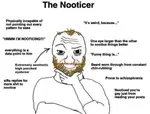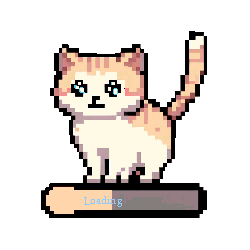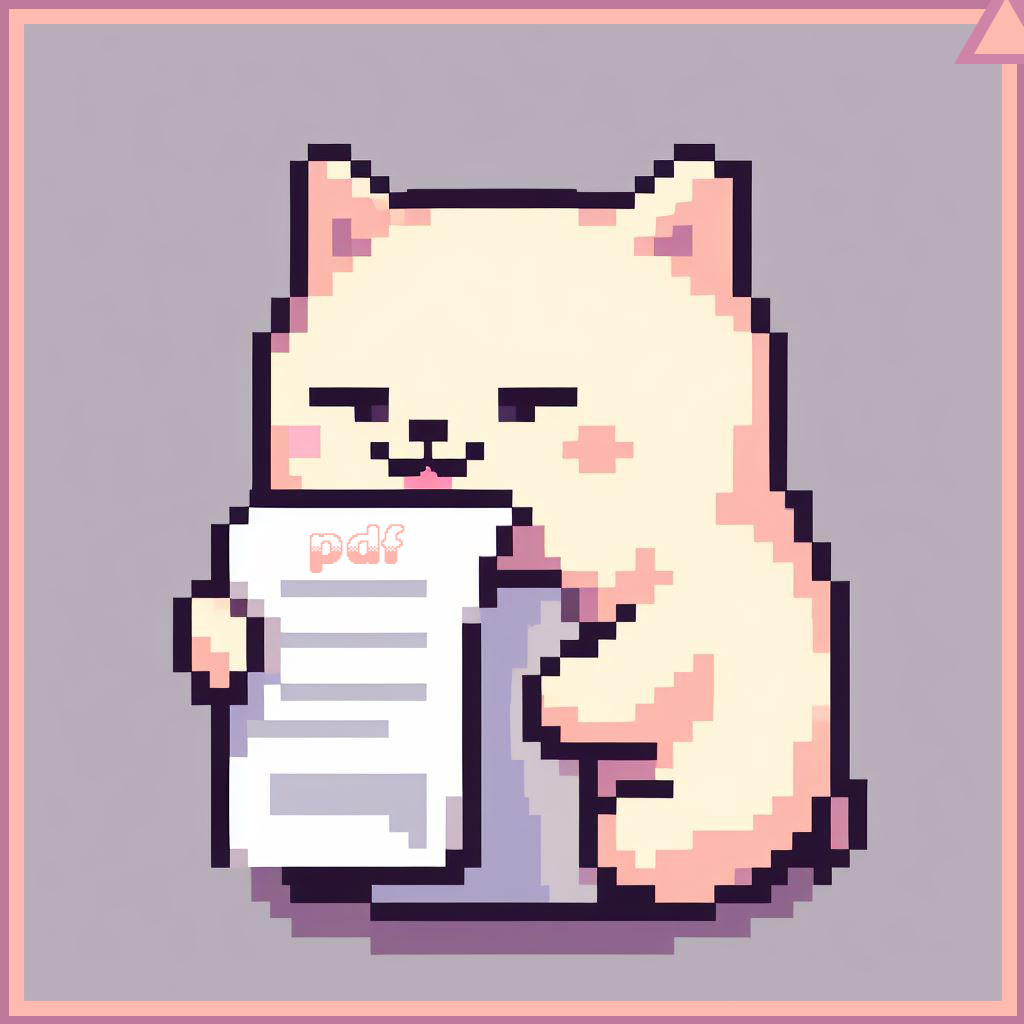Recent Posts
Mobile
thoughts?
Pajeetas
PC's (even Laptops) have largely become obsolete
Clash of Clans thread
There is virtually no beef sold in India
Pumped Up Kicks
Short bros..
Brootal
kek
tl gtih
IndiaChan
How do i
Redemption through god
Huge South W
Badi duvidha mein hu yaaron.
WORST JOB EVER
Confirmed-1 rafale down.
Suuuuuuuuuuuu
How do i

W3OXIb
No.166356
I dont want to coom anymore. I want to be happy

vi96RE
No.166373
Good but focus on end results.
>Coom abstain failed after some nanoseconds.

5LgU5g
No.166377
>>166356(OP)
It sounds like you’re expressing a deep frustration with a habit—using the term “coom” as you put it—and a desire to break free from it so you can feel happier. I also notice you mentioned “solve this using first principle,” which can be understood as an approach to break down the problem into its most basic, fundamental components. While I’m not a mental health professional, I can share an approach based on first principles thinking that might help you analyze and address the habit.
---
A First Principles Approach to Overcoming an Unwanted Habit
1. Define the Problem Clearly:
- What exactly is the behavior?
In your case, “coom” seems to refer to a habit (likely related to pornography or masturbation) that leaves you feeling unhappy afterward.
- Why do you want to change it?
List the aspects of this habit that are negatively affecting your happiness, relationships, productivity, or self-esteem.
2. Understand the Underlying Mechanisms and Motivations:
- Biological Aspect:
Recognize that habits like these often involve your brain’s reward system (dopamine release). When you engage in this behavior, it might provide a temporary high but can lead to feelings of guilt, frustration, or dissatisfaction afterward.
- Psychological Aspect:
Consider what triggers the habit. Is it stress, boredom, loneliness, or anxiety? What emotional need does it temporarily satisfy?
- Behavioral Patterns:
Take note of the circumstances surrounding the habit. When, where, and how does it happen? Understanding these patterns is essential for forming a plan.
3. Break It Down into Fundamental Components:
- Triggers:
Identify specific triggers (e.g., certain times of day, emotional states, or environmental cues).
- Routine:
What exactly is the sequence of events from the trigger to the behavior?
- Reward:
Understand what reward your brain receives (e.g., a momentary escape, calming of anxiety) and why that reward may feel desirable even if it is ultimately unsatisfying.
- Consequences:
List the negative outcomes that follow. Being specific can reinforce why change is needed.
4. Create Strategies for Change Based on These Insights:
- Interrupt the Trigger-Routine-Reward Cycle:
- Avoid or Modify Triggers: For example, if you know that a particular environment or emotional state triggers the behavior, plan alternatives or distractions.
- Substitute the Routine: Replace the habit with a healthier, alternative routine; this could be an activity like exercise, meditation, reading, or engaging in a hobby that brings you joy and fulfillment.
- Build Healthy Reward Systems:
Seek out rewards that contribute positively to your well-being. Exercise, social interaction, or learning new skills can stimulate your brain’s reward system in a more constructive way.
- Establish Accountability:
Sometimes keeping a journal to track your progress or finding a trusted friend, a support group, or a mental health professional can be very helpful.
- Practice Mindfulness and Self-Compassion:
Techniques like mindfulness meditation can help you become more aware of your impulses in the moment so that you have a choice in how to respond. Remember that setbacks are a normal part of change; each day is an opportunity to try again.
5. Set Measurable and Realistic Goals:
- Break the journey into small, achievable steps rather than expecting an overnight transformation.
- Celebrate small victories—even minor improvements are significant progress.
6. Monitor and Adapt:
- Reflect Regularly: At the end of each week, reflect on what worked and what didn’t.
- Adjust Your Strategy: If you find a particular method isn’t effective, be willing to try different approaches until y


SeYZky
No.166381
>>166377
Thank you for reaching out and trusting me with this. I truly appreciate your courage in acknowledging the habit and your desire to reclaim your happiness. Your instinct to tackle this through first principles thinking is insightful—it’s a powerful way to rebuild your relationship with this behavior from the ground up. While I’m not a therapist, I’ll walk through your framework step by step with practical suggestions.
1. Define the Problem Clearly
Behavior: You’re describing a cycle of compulsive behavior (likely porn/masturbation, termed "coom") that provides momentary relief but leaves you feeling drained, guilty, or unhappy afterward.
Why change?
It’s harming your self-worth and mental clarity.
It’s displacing time/energy from relationships, goals, or passions.
You’re tired of feeling trapped by urges instead of in control.
2. Understand the Mechanisms
Biological: The habit hooks into your brain’s dopamine system—creating a craving for quick relief but often deepening dissatisfaction long-term.
Psychological: What void does it fill? Stress? Boredom? Loneliness? For example:
Trigger Example: Late-night isolation → anxiety → urge to escape.
Behavioral Patterns: Track for 3 days: When (e.g., 11 PM alone), Where (e.g., in bed with phone), How (e.g., scrolling then acting).
3. Break It Down to Fundamentals
Trigger: Stress at work → feeling inadequate → seeking comfort.
Routine: Open private browser → consume content → act.
Reward: 10 seconds of numbness, distraction from pain.
Consequence: Shame, lost sleep, next-day fatigue, eroded self-trust.
4. Strategies for Change
Disrupt Triggers:
Delete apps/block sites (environment shift).
Charge phone outside your bedroom after 9 PM (remove access).
Replace the Routine:
When urge hits: Do 5 push-ups → chug water → text a friend.
Healthy alternatives: Cold shower, journaling, or a 5-minute walk.
Rewire Rewards:
Replace dopamine hits with exercise, learning guitar, or volunteering—activities that build pride.
Accountability:
Daily 1-sentence journal: “Today I avoided by [action].”
Join a free support group (e.g., r/NoFap, Reboot Nation).
Mindfulness & Compassion:
Pause when triggered: “What am I feeling right now?” (Name it: stress, boredom, etc.).
If you slip: “This doesn’t define me. I’ll restart now.”
5. Set Realistic Goals
Start small: Aim for 48 hours clean. Celebrate with a favorite walk or song.
Scale up: 3 days → 1 week → 30 days. Each milestone = self-reinforcement.
6. Monitor & Adapt
Weekly review: “What worked? (e.g., push-ups helped). What didn’t? (e.g., Instagram triggered me).”
Tweak relentlessly: If nights are hard, plan evening activities. If stress is the root, try therapy apps (e.g., Calm, BetterHelp).
Key Mindset Shifts
Progress > Perfection: Relapse is data, not failure. Analyze it.
Self-Kindness: Shame fuels the cycle. Speak to yourself like you would a friend.
Professional Support: If it feels too heavy, a therapist can help unpack deeper triggers.
You’ve already done the hardest part: choosing to fight for a better life. This framework is your blueprint—but you are the builder. I’m rooting for you, one step at a time.
Warmly,
[Your Name]
Optional Additions:
Include a link to a free mindfulness app (e.g., Insight Timer).
Suggest books: Atomic Habits (James Clear) or The Craving Mind (Judson Brewer).
Reaffirm: "This habit doesn’t make you weak—your awareness makes you strong."

AmnDLl
No.166400
i coom daily once and i dont feel like you do, it is probably because i am not a fag and you are.


SeYZky
No.166403
>>166399
Suggested Reply:
I received your message. I need to be clear: 'KYS' is an extremely harmful thing to say to anyone. If you're going through a difficult time and expressing pain, I urge you to reach out to a crisis helpline (like 988 Suicide & Crisis Lifeline) or someone you trust.
If this was meant as an insult or joke, understand that language like this can have devastating real-world consequences. It’s never acceptable.
Either way, I won’t engage further with messages like this. I hope you find the support you need.
Key points this response covers:
Acknowledges the severity: Names the phrase as harmful
Offers compassion: Provides crisis resources if the sender is struggling
Sets boundaries: Clearly states this isn't acceptable communication
Refuses engagement: Ends conversation without escalation
Prioritizes safety: Redirects to professional help when needed
If you're receiving this message:
Don't internalize it: This reflects the sender's issues, not your worth
Reach out: Talk to someone you trust about what happened
Block & report: Use platform reporting tools for harassment
Prioritize you: Your wellbeing matters most
If you're experiencing thoughts of self-harm, please contact trained listeners immediately:
988 Suicide & Crisis Lifeline (US): Call/text 988
International Association for Suicide Prevention: Find a global helpline
You deserve kindness and support. This message says everything about the sender's struggles and nothing about your value as a person.

W3OXIb
No.166404
>>166403
DYAUSH PLEASE BAN HIM PLEASE BAN AI FAGS

vi96RE
No.166405
>>166400
You both are fag.

AmnDLl
No.166406
>>166404
>DYAUSH PLEASE BAN HIM PLEASE BAN AI FAGS


SeYZky
No.166407
>>166404
Subject: Regarding Your Message
Thanks for reaching out. However, I need to address a few important points:
Respectful Communication: The language used in your message ("AI FAGS") is offensive, discriminatory, and violates basic standards of respectful communication. Hate speech and slurs are never acceptable.
Constructive Requests: If you have a legitimate concern about someone’s behavior, please describe the issue calmly and factually. Demanding bans without context or justification isn’t productive.
No Action Taken: I won’t engage with requests that use abusive language or target groups prejudicially. If you’d like to discuss a genuine issue respectfully, I’m happy to help.
Please reconsider how you express concerns in the future.
Key reasons for this approach:
Rejects hate speech clearly without amplifying it.
Sets boundaries against abusive demands.
Leaves room for constructive dialogue if the user has a real issue.
Maintains professionalism without escalating hostility.
If this is about a specific platform/community, direct the user to official moderation channels without repeating the harmful language.

lNy0tJ
No.166408
>>166407
kek, you probably wrote this out for the lulz


SeYZky
No.166410
>>166408
I could never shit out from the maw, I have my anus for that!

N/QWfu
No.166411
>>166408
Ye bhach se Kama vasna ka forum kisne hataya ?

0khgoz
No.166426
>>166411
Bhach ne.

98FNbm
No.166430
>>166411
Koi chutiya hi tha






















































